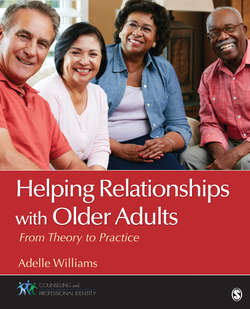Читать книгу Helping Relationships With Older Adults - Adelle M. Williams - Страница 21
На сайте Литреса книга снята с продажи.
Genetic Control Theory of Aging
ОглавлениеThe genetic control theory of aging suggests that the genetic information in our cells provides a blueprint for the aging process and that different cells may be programmed to divide a set number of times. This theory of aging assumes that the life span of a cell or organism is genetically determined—that the genes of an animal contain a program that determines its life span, just as eye color is determined genetically (Encyclopaedia Britannica, 2015). This theory finds support in the fact that people with parents who have lived long lives are likely to live long themselves. Also, identical twins have life spans more similar in length than do nontwin siblings (Encyclopaedia Britannica, 2015). For example, the cells from an embryo will divide approximately 50 times before dying, but similar cells from an adult will divide only 20 times (Cristofalo, 1988). Genes influence life expectancy and place some people at risk for certain diseases, but despite the fact that some older persons are more susceptible to diseases than others, it is not definite that they will develop the disease.
The genetic theory of aging centers on telomeres, which are repeated segments of DNA (deoxyribonucleic acid) occurring at the ends of chromosomes. The number of repeats in a telomere determines the maximum life span of a cell, since each time a cell divides, multiple repeats are lost. Once telomeres have been reduced to a certain size, the cell reaches a crisis point and is prevented from dividing further. As a consequence, the cell dies. This may be an important mechanism of aging in tissues like bone marrow and the arterial lining where active cell division is necessary (Block, 2015). This theory contributes to our understanding of aging by attempting to explain a genetic foundation for why individuals live as long as they do. However, other factors may be operating in the aging process, so it cannot be explained purely by genetics.
